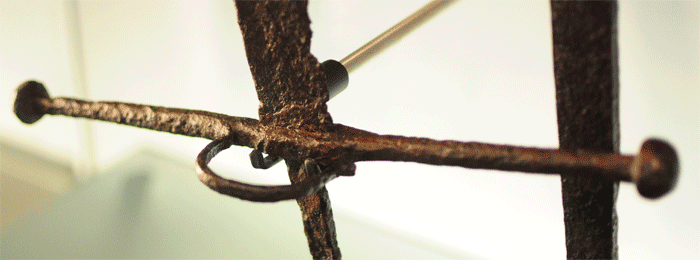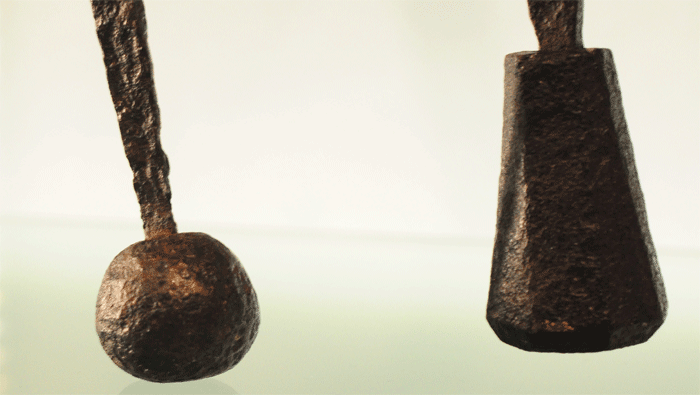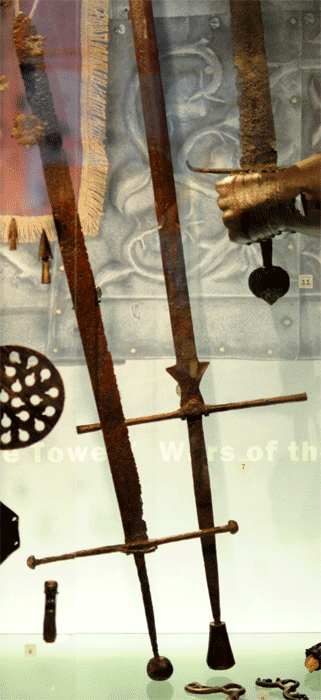I'm have a few questions about a sword design/profile that has been called the 'bastard backsword' - a straight, European-style sword that has an single edge for most of its length, but a sharpened false edge, from about the COP to the tip.
Some years ago, Angus Trim made a few of these (variously catalogued as AT1564, 1665, and 1566 - see sample images below; other and larger images can still be seen on the ASA Sworkworks site from that time: http://www.atrimasa.com/AT1440.html).
I was curious about their historical precedence. A fairly thorough search here and at SFI (using Google Advanced Search) found a couple of people asking the same question back then, but now answers.
I recently came across one historical example, number 1977-167-550 in the Philadelphia Museum of Art ([url]http://www.philamuseum.org/collections/permanent/162497.html?mulR=793|1[/url], image below):
| Quote: |
| Hand-and-a-Half Sword
Made in the German-speaking lands c. 1525-50 Artist/maker unknown, German or Austrian (Blade) steel; (hilt) blackened iron, wood, leather replaced Overall: 10 3/8 x 45 11/16 inches (26.3 x 116.1 cm) * Gallery 249, Arms and Armor, second floor (Kretzschmar von Kienbusch Galleries) 1977-167-550 Bequest of Carl Otto Kretzschmar von Kienbusch, 1977 |
So, to the questions:
- Do we have other historical examples of this type? (Note that I'm not asking about Swiss sabres or langes messers with false edges).
- Do we have any documentation/discussion about this type at all? Oakeshott has a discussion about Swiss sabres in European weapons and armour: From the renaissance to the industrial revolution, but I don't recall him talking about 'bastard backswords'.
- Is there a better / more accurate / period name for them?
- Is anyone else currently making them?
- What do you see as the pros and cons of such a design in terms of handling, techniques, efficiency, etc?
Any reflections or feedback appreciated; speculation more appreciated if flagged as such! :D
Cheers,
Mark T
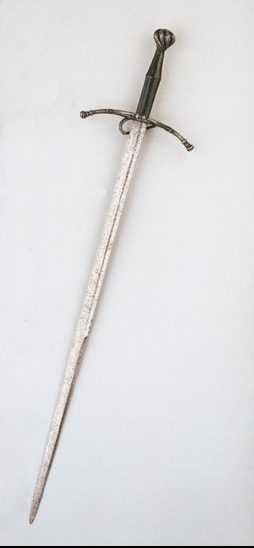
1977-167-550, Philadelphia Museum of Art

AT1566 Bastard Backsword
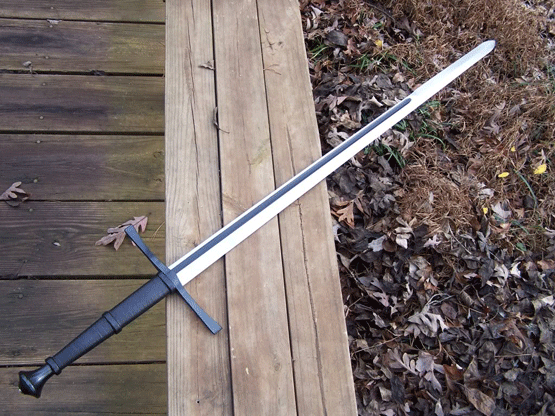
AT1564 Bastard Backsword

